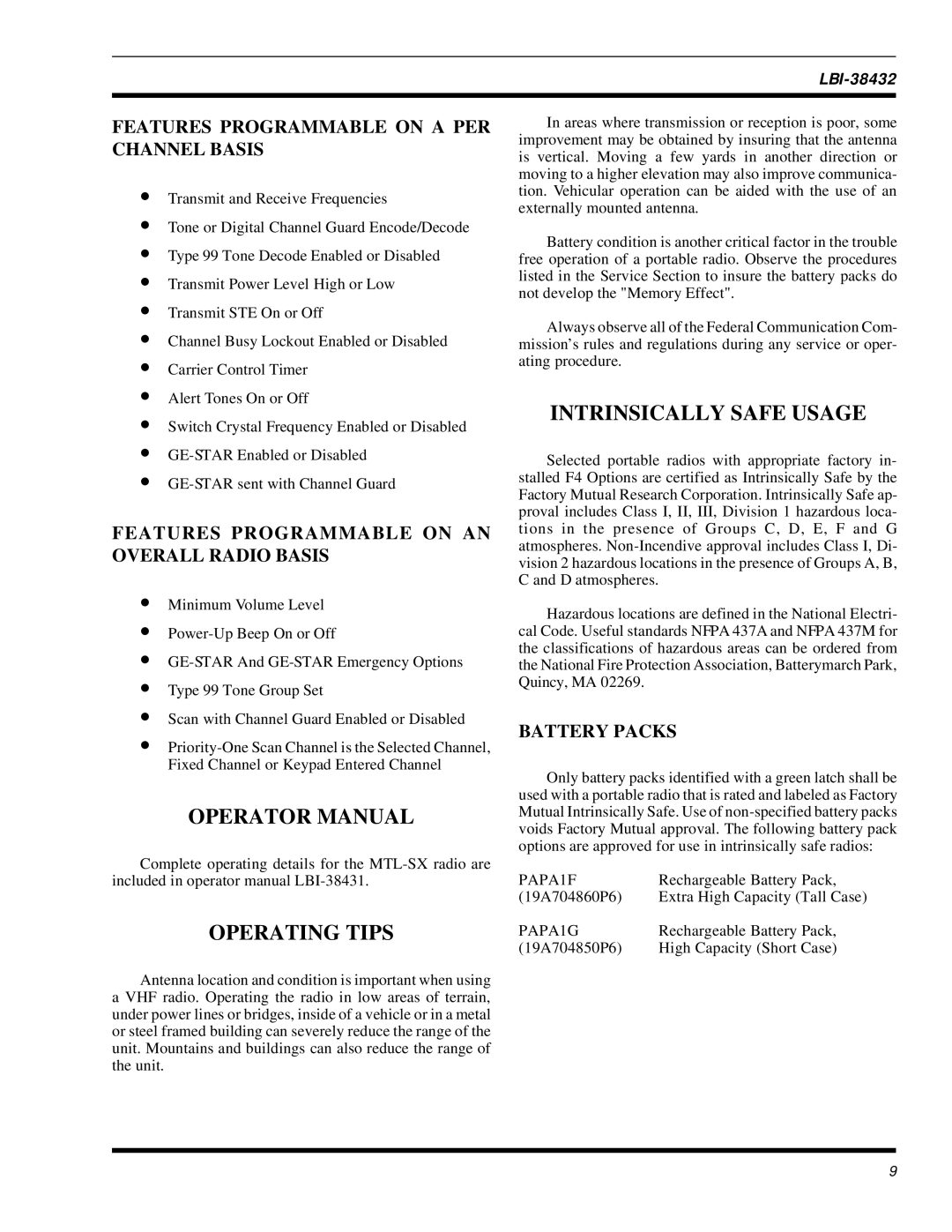MTL-SX specifications
The Ericsson MTL-SX is an innovative multi-technology radio system designed to support a variety of applications in the modern telecommunications landscape. As an integral part of Ericsson's portfolio, the MTL-SX brings together advanced features, high performance, and a suite of technologies that cater to both current and future demands of network operators.One of the standout features of the MTL-SX is its support for multiple frequency bands. This flexibility allows operators to utilize existing infrastructure while efficiently transitioning to newer, more advanced technologies like 5G. The system is designed to operate seamlessly across various deployment scenarios, enhancing both coverage and capacity in urban and rural environments.
The MTL-SX is built on a software-defined radio architecture. This enables easy updates and enhancements, allowing telecom providers to adapt to changing market conditions without the need for extensive hardware upgrades. The ability to deploy new functionalities through software updates is a significant benefit that can reduce operational costs and improve service delivery.
Furthermore, the MTL-SX employs advanced antenna technology, including massive MIMO (Multiple Input Multiple Output), which increases spectral efficiency and elevates the quality of service. This feature is crucial for supporting high-data-rate applications and ensuring a reliable connection for users, particularly in densely populated areas where network congestion is a concern.
In terms of energy efficiency, the MTL-SX integrates intelligent power management features. These mechanisms optimize energy consumption based on real-time network demands, helping operators reduce operational expenses and minimize their carbon footprint. In an era where sustainability is a priority, the energy-efficient design of the MTL-SX aligns with global efforts to create greener telecommunications.
Complementing its hardware capabilities, the MTL-SX also supports advanced network management and orchestration tools. These tools provide operators with enhanced visibility into their networks, facilitating proactive maintenance and performance monitoring. By leveraging advanced analytics, operators can optimize their networks for better reliability and service quality.
Overall, the Ericsson MTL-SX stands out as a robust, flexible, and future-proof solution for network operators looking to enhance their service offerings in a competitive market. Its multi-technology capabilities, combined with software-defined architecture, energy efficiency, and advanced management tools, make it a key asset in the deployment of next-generation networks.

